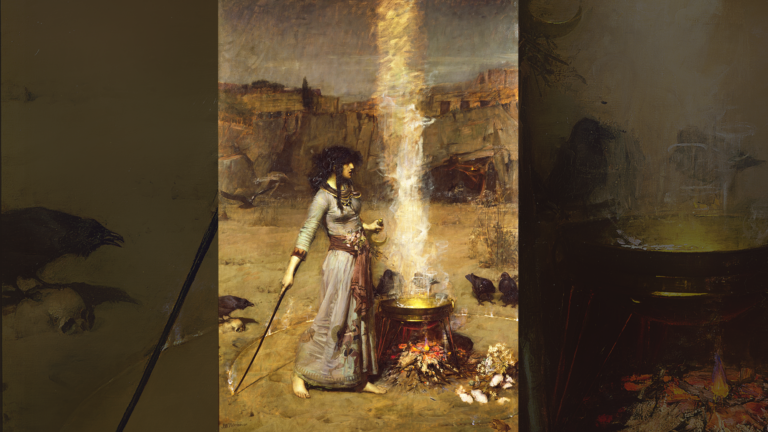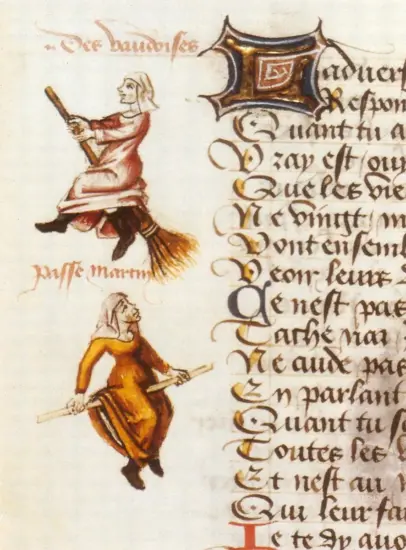
Why we’re still fascinated with witches
The invention of the printing press, among other events, spread witchcraft accusations during the Early Modern era.
Women were charged more often than men, creating a connection between witchcraft and female domestic tools like brooms.
Witchcraft accusers and appreciators alike are still active today.
The concept of a “witch” can be found around the world and throughout history, from Ancient Greece to present day Ghana. Professor Deborah Harkness at the USC Dornsife College of Letters, Arts and Sciences says that witches are generally associated with the idea of the “liminal” or the spaces in-between worlds or states of being.
This may explain why we see witches returning to our consciousness each year around October and November, as the “veil” between our world and the one beyond is said to thin.
“Whatever culture they were in, anywhere around the world, they are liminal figures, threshold guarders who stood between healing and sickness, life and death, the hearth and the outdoors, between birth and creation,” says Harkness, who is author of the best-selling All Souls Trilogy, which features witches and the occult.
A Dornsife Dialogues discussion between Harkness and Lisa Bitel of USC Dornsife’s School of Religion, hosted by Peter Mancall of the USC-Huntington Early Modern Studies Institute based at USC Dornsife, looked at the history of witches and their reverberating appeal today.
Find a transcript of this audio here under the transcript tab.
Witchy women

In Europe, the publication of the Malleus Maleficarum, or “Hammer of Witches,” a guide to identifying witches written by two inquisitors in 1486, helped to formally codify witchcraft and shaped our modern understanding. It brought together folk ideas of witches and their activities, such as flying on brooms or turning men into beasts, into one, definitive source. Its publication coincided with the rise of the printing press, which accelerated the spread of its ideas and fueled witch paranoia.
The Reformation, which began in 1517 and splintered Christianity into opposing factions, also fueled accusations as congregants began making charges of heresy and witchcraft against those of opposing denominations.
Both men and women were accused, but women were in the crosshairs more often. This was due, in part, to the popular notion that women were weaker of mind and thus more prone to sin. It was an idea gleaned from a melding of Christian theology and the writings of the ancient Greek philosopher Aristotle, who believed that women had less self-control than men. His writings had also started circulating more widely with the introduction of the printing press.
Women were also more likely to provide basic medical and veterinary care in villages and often performed initial triage when illnesses or accidents struck, putting them at risk of scapegoating when things went wrong. “Women played a very significant role in keeping a family alive, so it’s not surprising that if something went wrong, women were also blamed,” says Harkness. Much of the symbolism of witches, such as the broom, cauldron or cats, can be related back to women and their domestic life.
Appeal of the supernatural
Witchcraft rumors aren’t just a remnant of the distant past. Accusations remain a serious danger to people, especially women, around the world, says Bitel.
America’s cultural discourse is currently filled with notions of secret, powerful groups who deploy Satanic symbolism and possess a thirst for infant blood. Such ideas seem to be connected to concerns over tumultuous changes in society, says Bitel.
“Conspiracy theories are an expression of anxiety about why bad things are happening and who is to blame for them. They use words like cabal, which is a magical term for a group of enemies, to describe the people who they believe are responsible,” she explains.
There’s also been a more benign revival of witchcraft, in the form of neopaganism. Social media is filled with tarot readers, astrologers, spell casters and fortune tellers. “Witchtok” is a thing. Fashion designers deploy runes and cult symbols. Meet-ups bring together Wiccans for “coven wellness gatherings.”
Neopaganism’s popularity is overlapping with a revived interest in Catholicism and its associated rituals and mysteries, perhaps signaling a broader yearning for enchantment.
“I think we have room in our brains, no matter what we tell ourselves about religion and science and the Enlightenment, for a fascination and desire for the supernatural and religion,” says Bitel.
Featured USC Dornsife scholars:
Deborah Harkness, professor (teaching) of history
Lisa Bitel, Dean’s Professor of Religion and professor of religion and history
Peter Mancall, Distinguished Professor, Andrew W. Mellon Professor of the Humanities, Linda and Harlan Martens Director of the USC-Huntington Early Modern Studies Institute and professor of history, anthropology, and economics